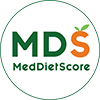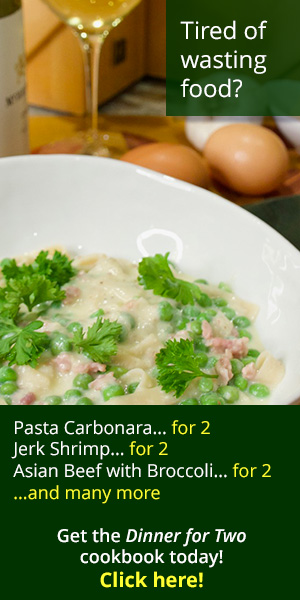The Mediterranean Diet
No. 1 - Vegetables
This one’s pretty easy. It’s pretty much impossible to eat too many vegetables. Keep in mind that veggies aren’t just for dinner. Making them a part of your lunch and as snacks is one way to eat more. Pile that sandwich high with cucumbers, peppers, lettuce, tomatoes, onions. Anything that you like. Things that you don’t think you like you might if you give them a second chance.
Make plans to have an extra helping for dinner. It won’t add many calories and helps fill you up.
Often people will say, “I don’t like vegetables.” If you are one of those people, think of veggies you might like -- onions, carrots, spinach. Make a list for yourself of the veggies that you like and keep them on hand. It will be longer than you think.
Here's information about different vegetables used in recipes on the web site:
Arugula
Asparagus
Beets
Bok Choy
Bottled Peppers
Brussels Sprouts
Button Mushrooms
Cabbage, White
Celery
Choosing Eggplant
Cipolini Onions
Collard Greens
Cucumbers
Cucumbers, Fiber in
Eggplant
Eggplant, Choosing
Eggplant, Nutrition
Eggplant, Salt and
Fennel
Frozen Peas
Green Beans
Green Onions
Jicama
Leeks
Lettuce, Romaine
Mushrooms, Button
Mushrooms, Crimini
Mushrooms, Shiitake
Napa Cabbage
Onions
Parsnips
Peas, Frozen
Peppers
Peppers, Bottled
Peppers, Chipotle
Peppers, Hot
Poblano Chilis
Shallots
Spinach, Fresh
Spinach, Frozen
Sprouts, Bean
Squash
Squash, Yellow
Squash, Zucchini
Tomatillos
White Cabbage
Vegetable side dishes and vegetarian recipes:
Sides:
Candied Carrots
Cheese Stuffed Peppers
Collard Greens
Green Beans with Red Onion
Herbed Zucchini
Lemon Butter Brussels Sprouts
Minted Peas
Pan Grilled Asparagus
Pan Grilled Broccoli
Parmesan Squash
Roasted Acorn Squash
Roasted Beets
Roasted Tomatoes
Sauteed Arugula
Sauteed Spinach
Shredded Brussels Sprouts
Spiced Snap PeasVegetarian Main Course Dishes:
Asparagus Linguine
Baked Penne
Baked Ziti
Butternut Squash Risotto
Chile Rellenos
Chopped Salad Tacos
Corn Quesadillas
Creamy Mac and Cheese
Eggplant Parmesan
Fettucine Alfredo
Fettucine with Roasted Eggplant and Broccoli
Fettucine with Roasted Mushrooms
and Cipollini Onions *
Fettuccine with Roasted Red
Pepper Vinaigrette *
Fettuccine with Olive Oil and Garlic
Gnocchi
Mona's Sauteed Veggie Plate
Mushroom Risotto
Mushroom Souffle
Pasta with Tomato Sauce
Pizza - Tomato, Basil, and Roasted Garlic
Pizza - Dill Pesto and Potato
Pizza with Roasted Eggplant and Feta
Ratatouille
Red Pepper Orzo
Soft Corn Tacos
Vegetarian Lasagna
Yam Gnocchi
Zucchini Chèvre Risotto
* Contains chicken stock. Substitute low-sodium vegetable stock, if desired.
Mediterranean Diet Basics
The basics of the Mediterranean diet can be broken into 9 important areas of change for your health:
1. Vegetables
No. 1 - Vegetables This one’s pretty easy. It’s pretty much impossible to eat too many vegetables. Keep in mind…
2. Legumes
No. 2 - Legumes As with the wide variety of cabbages you can find in the market, there are lots…
3. Fruits & Nuts
No. 3 - Fruits and Nuts Fruit is the perfect snack. Sweet and satisfying, it’s important to keep your fridge…
4. Cereal Grains
No. 4 - Cereals and Grains Whole grains are really good for you. If you are used to "white" starches…
5. Fish
No. 5 - Fish More fish, less meat. Simple. A lot of people say that they don’t like fish. However,…
6. Oils
No. 6 - Oils and Fats In most studies on the Mediterranean Diet this is generally classified as olive oil.…
7. Dairy Products
No. 7 - Dairy The traditional Mediterranean diet doesn’t have dairy products as a major focus. When dairy is part…
8. Meats
No. 8 - Meats Less meat and lean meats. The median consumption was about 4 ounces of meat per day.…
9. Alcohol
No. 9 - Alcohol There is good evidence that moderate use of alcohol is good for you and this research…




